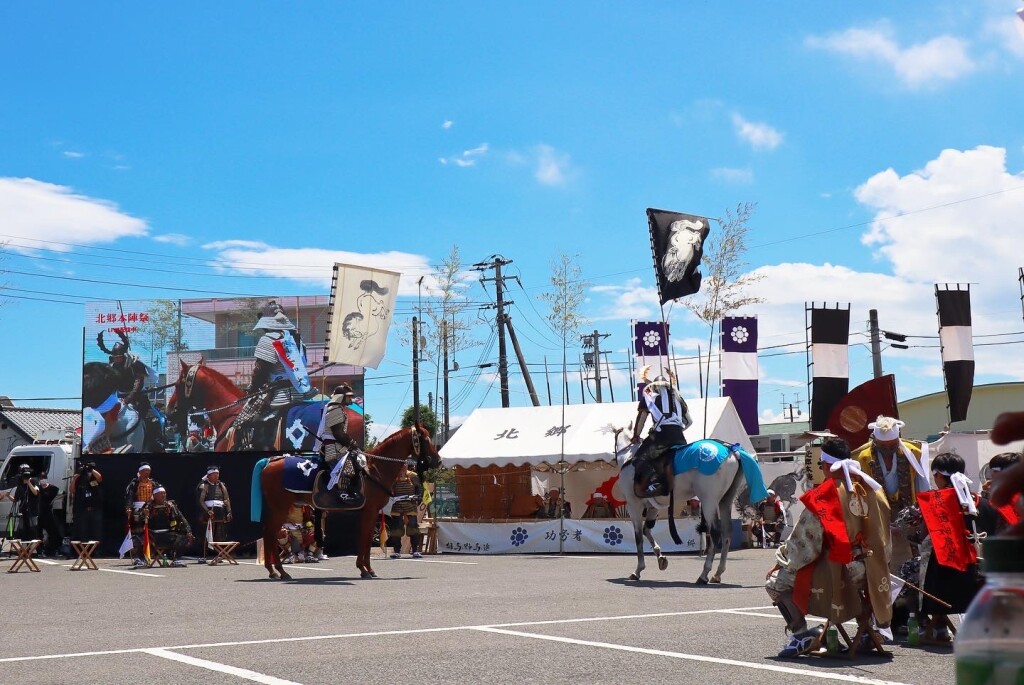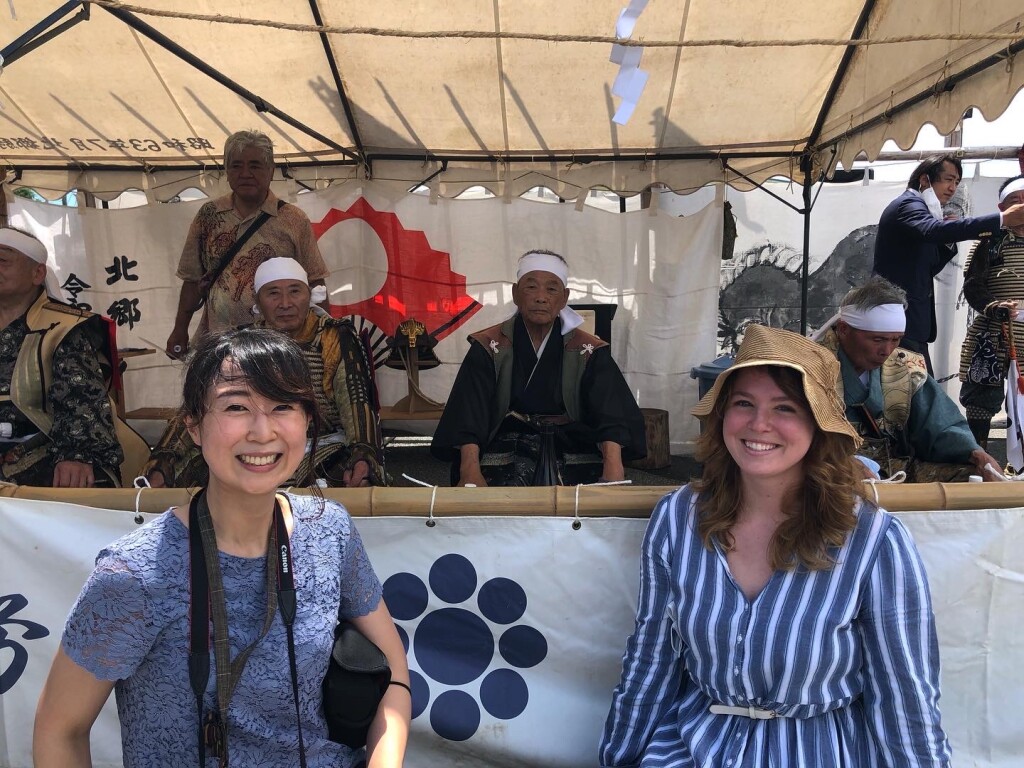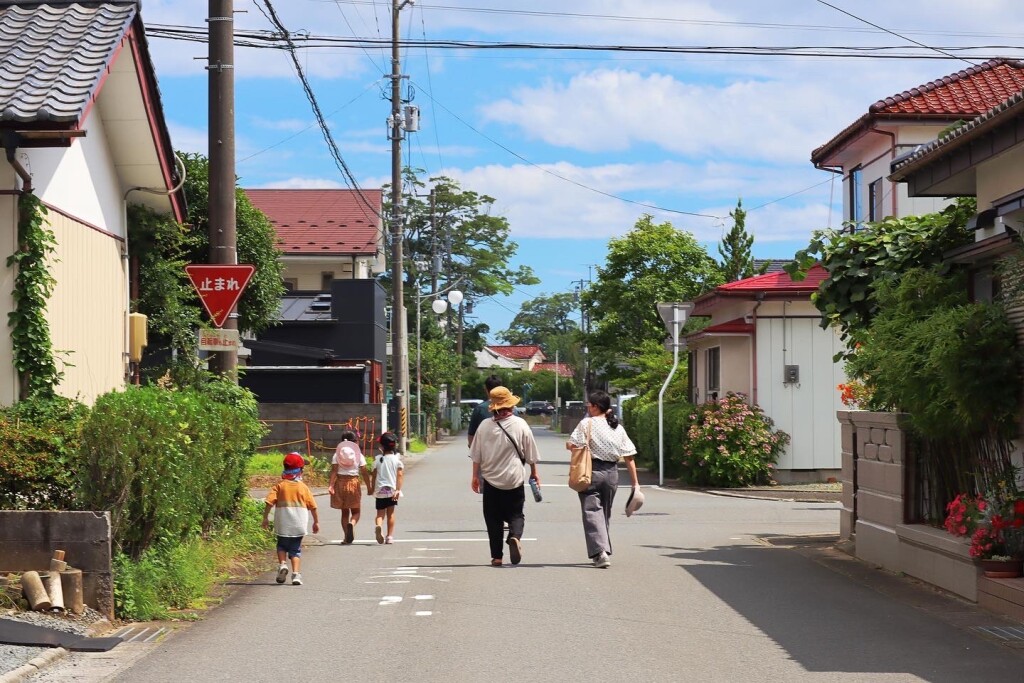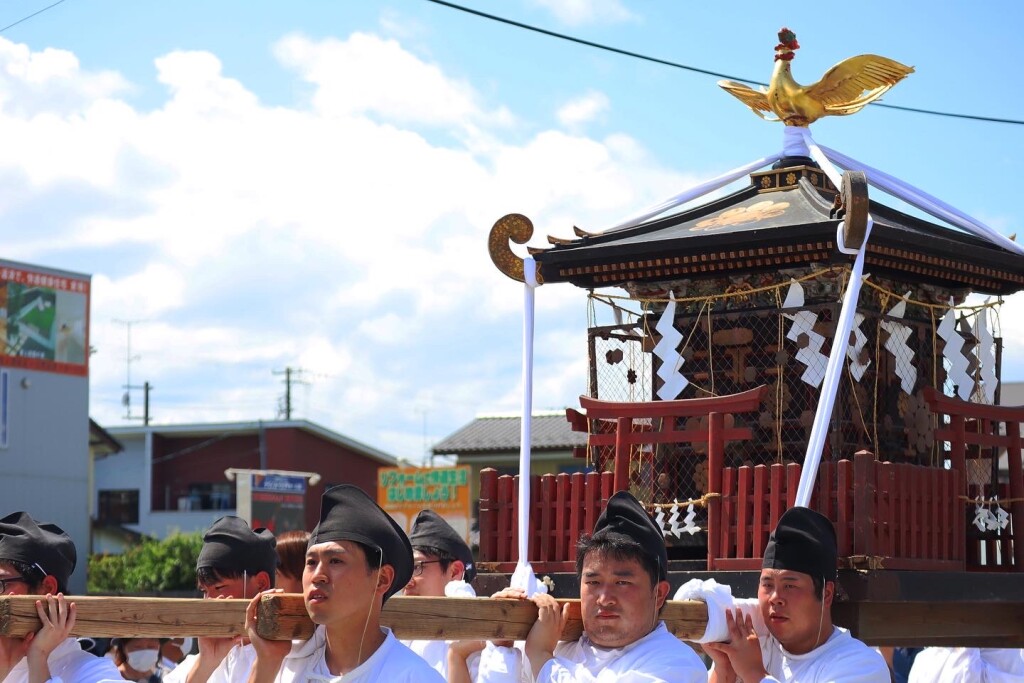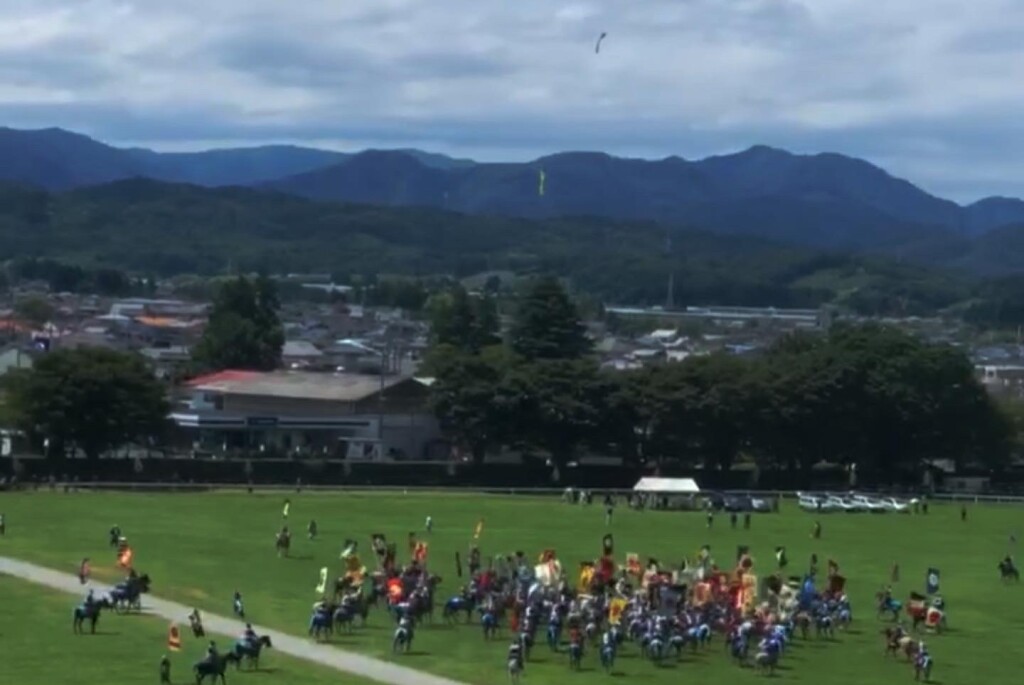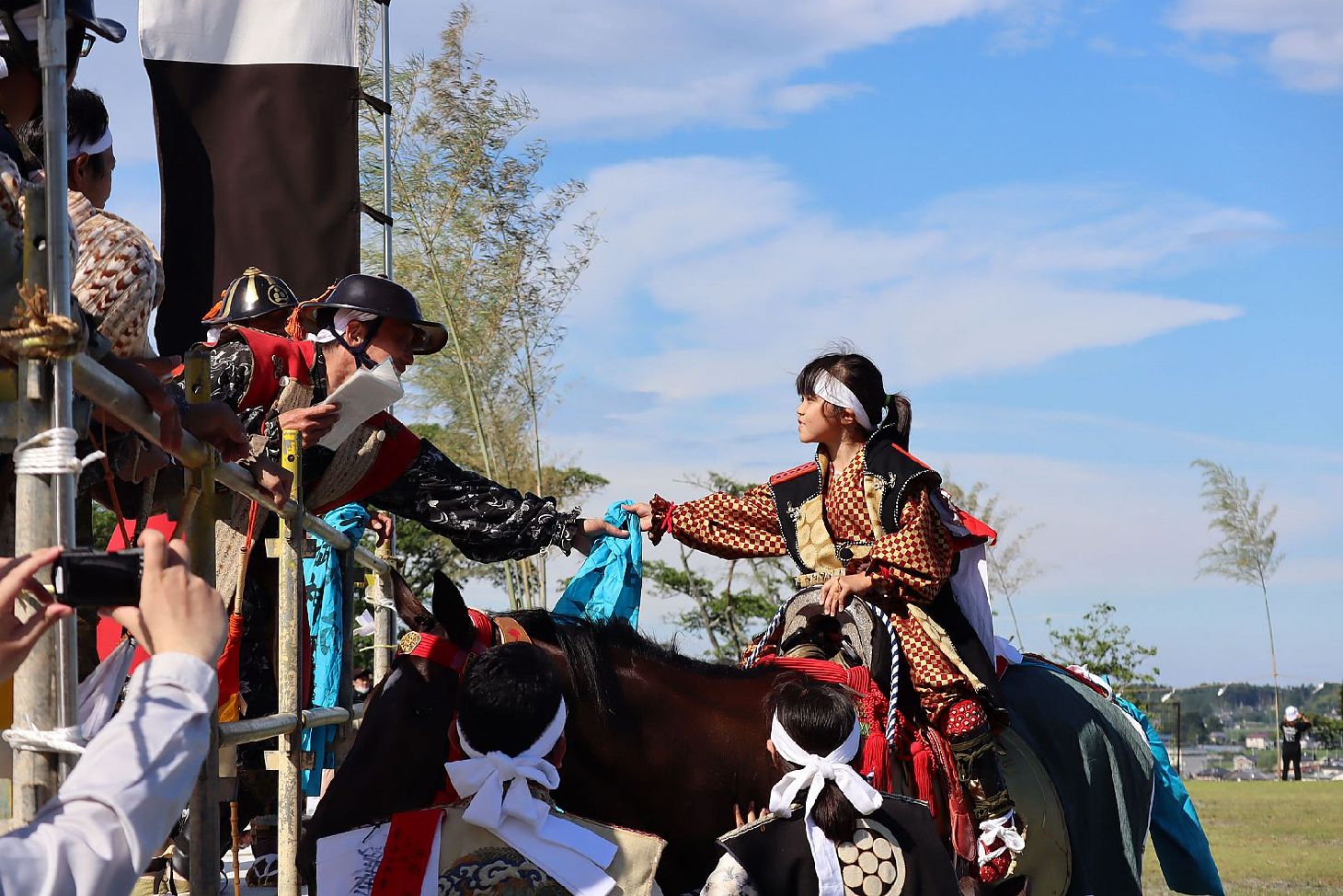
November 2023 Update: The dates of the Soma Nomaoi Festival have been changed to Saturday, Sunday, and Monday of the last week of May from 2024 onwards.
Soma Nomaoi Festival is a horse-centric samurai festival that dates back to over 1000 years ago!
The festival honors and celebrates the tradition of raising horses for military strength and as a part of life for people in the area. Although the festival has changed over the years (for instance allowing women to participate and adding new events!), the original feeling of the festival is still strong and alive.
The history and heart of the region shine through at this incredible Japanese festival that you won’t want to miss!
Day one (Saturday): The Local Favorite Day
I reached out to my friend, Satou Shouko, who is from Kashima-ku, an area that is a part of the region that was ruled by the Soma clan. She offered to take me and my coworker Rin around to see the events on Saturday. Ecstatic, we gathered our cameras (and a small gift for Satou-san of course) and headed off.
Satou-san was incredibly kind and explained the events that we would be seeing that day. I was surprised to hear from her that Saturday is the favorite day for most locals, so much so that many will enjoy the festival on Saturday but skip out on Sundays celebrations!
The Festival Begins!
We watched as a screen showed live footage from around Soma clan. The events of the day are separate but occur simultaneously across the areas. So, depending on which town’s festivities you choose to see, you can witness a variety of events. 2022 was the first year that they were able to conduct a livestream of the event on this scale, and it was absolutely incredible. Once you finish reading, go check it out.
Thanks to the livestream we got a close look at the home of the Supreme Commander where pre-departure ceremonies were taking place. The live feed showed us prayers and toasts at three shrines: Soma Nakamura Shrine, Soma Ota Shrine, and Soma Odaka Shrine. One toast I saw on screen was followed by a smashing of the glass sake cup, an action that is intended to bring good luck supposedly. The breaking of glass, shouting in tough-sounding samurai words, and the sounding of conch shell horns is an intimidating series of sounds to take in. How terrifying it must have been to face a samurai warrior on the battlefield!
Soutaishou-omukae (Reception of the Supreme Commander)
Warriors on horseback marching through the town and racing down narrow paths through the rice field travel back and forth, announcing updates to the leaders who are already seated, waiting to receive the Supreme Commander. This year, the Supreme Commander role was filled by the firstborn grandson of the reigning Supreme Commader! At 14 he has now reached the historical age of manhood, his debut at the festival was only days after his coming-of-age ceremony. Next year his grandfather will return to the position where he will stay until his son will permanently take over.
While waiting, there are dance performances, conch shell blowing, and warriors on horseback rushing in to provide information.
There was a short break in the action, and suddenly visitors were permitted to enter the square and mingle with the Samurai leaders, warriors, conch shell horn bearers, and more. Taking photos with them as they sat in character was so much fun. I turned to thank one of the leaders for the photo when he suddenly offered me some sake and a snack from his tray of traditional snacks (umeboshi and cucumbers!) which was a big surprise. It was so much fun to connect with such a high-ranking warrior and glimpse behind the character and see he is actually a really nice old man! When the break time ended, the tough shouting and samurai acting began again!
Suddenly the conch shell horn bearers stood to attention and sounded their horns to announce the arrival of the Supreme Commander. Flanked by more tough-looking men on horses, the procession was impressive!
More dancing, toasts, and speeches ensued! My favorite part? When they began to sing the ancient anthem of the Soma clan, the same song that their ancestors sang, the crowd joined in. It was absolutely magical to be in the midst of a community that retains such strong links to its history and culture.
As the group began to prepare for their march through the streets, people rushed off to find the ideal place to view the parade. As the procession of samurais on horseback marched down the street.
Gyouretsu (Samurai Procession)
We rushed down the street to a little intersection in the road and waited with others to catch a glimpse of the parade.
The parade here is a small version of the parade that happens on Sunday when all the districts of the Soma Clan join together in a massive procession of roughly 350 horses! (Not including the many more people who join the procession on foot.) The ornate decorations on the horses and the beauty of each set of armor are amazing to view up close. Various flags represent the family crests or different subgroups of the Soma clan and are carried proudly through the streets. Every once in a while you will notice the procession come to a halt, and the sounding of the conch shell horns as well as the occasional sound of a drum.
The intricate historic style of the procession provides a stark contrast to the telephone lines and traffic lights that look so modern it feels almost alien. This parade really gives you a feeling of Japan’s wonderful way of preserving history so that ancient cultural traditions can exist among the modern culture, a perfect blend of the old and new.
Shinki-soudatsusen (Flag Competition)
After the parade, the horses are transported to a large open field on a hill overlooking the sea. In the field, samurai warriors sit with their families (who look strange in comparison in modern clothes) to enjoy a snack and drink. Watching moms pull out homemade rice balls (onigiri) and Fukushima peaches to feed to their little warriors was extremely cute. The horses were relaxing near their families, munching on some tall grasses.
Once all of the horses and participants have arrived, the game can begin!
The sounding of the conch shell horns is followed by a loud BANG as fireworks are launched into the sky and colorful flags fall slowly dancing through the sky. The explosions sound like what I imagine a battlefield may have sounded like. Some horses naturally got spooked, while other were braver, heeding the commands of the riders and rushing into the thick of battle to capture the quickly falling flag.
In some cases, the spooked horses launched their riders into the air sending them tumbling across the grass. Those who were ejected from their seat seemed to be okay, however, I quickly became aware of the ambulance and health professionals who were standing by on site - just in case! What a relief.
The joy on their faces as they successfully captured a flag was really beautiful, as the families of the riders cheered from the sidelines.
The close & intimate setting of Saturday’s event was wonderful and there were a lot of opportunities to chat with people, take photos, and witness these incredible events up close. Sometimes too close! At one point I had to dash away from the sidelines as one nervous horse stomped a little too close. In a moment of panic, I dropped my GoPro camera a little too close, fortunately, it wasn’t stomped into oblivion! So please be cautious when experiencing the event up close on Saturday and be prepared to dash away with your equipment in case a nervous horse wanders into your personal space.
Day two (Sunday): The Main Event
Despite the heat and exhaustion of Saturday, I went to Sunday’s event as well! Unfortunately, Satou-san and Rin couldn’t join me, but I set out with some other friends to check it out.
This is the day when all of the Soma clan gathers to compete against each other in large-scale versions of events that took place on Saturday! This event is more tourist-friendly with food stalls, and souvenirs stands. Plus, it is pretty easy to know where to go as all you need to do is follow the crowd!
A huge parade marches through the streets, this year there were around 350 horses participating- and even more human participants of course! The parade ends at a large arena and amphitheater with many seats of horses gather at the end of the parade. Dance performances, a horse race, and a massive capture-the-flag event take place here and it is absolutely incredible.
Flanking either side of the seating area are shaded horse stables where horses are brought to relax and wind down if they get too hot and stressed, or if they just need a rest. I was able to chat with the owners of the horses and find out a bit more about these sweet babies. One three-year-old horse I met was going to be in the racing event later, so it was a lot of fun to meet him and then later recognize him by his flag. Like cheering for a friend, I was so happy to see him win third place in his race. What a champion!
Due to the large number of horses the falls were a bit more intense on this day creating an exciting atmosphere similar to a rodeo. Everyone on the edge of their seats to see what would happen! Shocked and amazement echoes across the audience, especially in one instance where a rider was tossed off his horse but he managed to hold onto the reigns and calm the horse down all on his own! Now that is some next level horse whispering.
The area is so much bigger, some spooked horses would race by at jaw dropping speeds to the edges of the area or to the area where they knew they could get water and snacks while their rider frantically held on. Fortunately, there didn’t seem to be any injuries that were too bad, but there were definitely some limping samurai warriors by the end of the day!
Day three: Nomakake (The Ancient Horse capturing ritual)
I wasn’t able to make it to the third and final day of the festival but I imagine that it is smaller and more intimate like the first day.
On this day the event takes place where people capture a wild horse without using any tools and then take the horse to the shrine as an offering. This event is the most ancient and traditional event of the festival, existing since ancient times.
I hope that you will go experience this incredible festival for yourself!
This was Reagan from the Fukushima Prefecture Tourism and Local Products Association, thank you for reading and joining along on this story. Please contact us if you want to visit or have any questions about the festival or visiting Fukushima.
Want to experience a horseback ride through the region that was ruled by the mighty Soma Clan?


